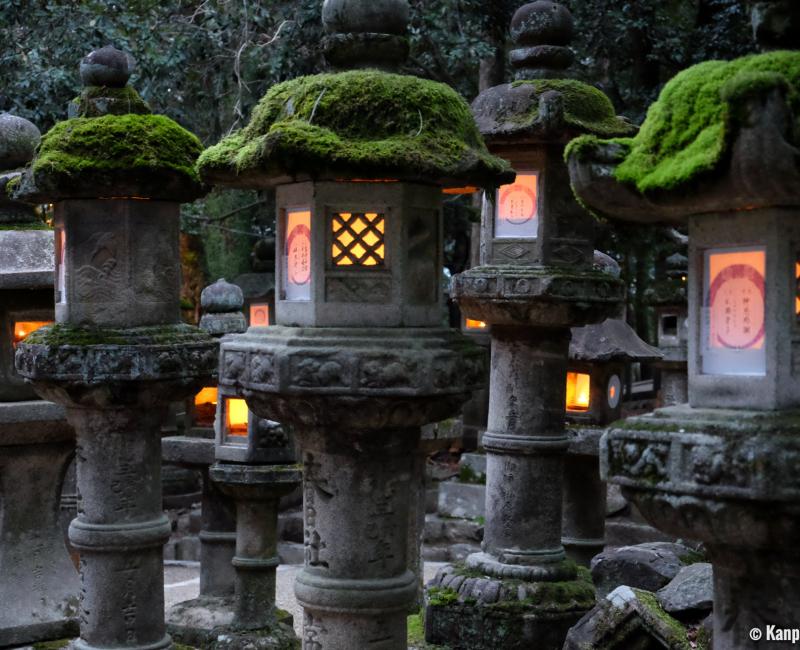Setsubun Mantoro
The Lantern Festival in Nara
Setsubun Mantoro is a yearly tradition held each February 3 night in Kasuga Taisha Shrine in Nara. "Setsubun" is the beginning of spring according to the Japanese lunar calendar, and "Mantoro" means "10,000 lanterns." During this ritual, 3,000 stone and bronze lanterns are lit up at nightfall. A similar event, named Chugen Mantoro, is also held in summer, during Obon, in mid-August.
The light up lanterns have a special meaning in Kasuga Taisha: The light is supposed to help people overcome the darkness of ignorance. Mantoro festival is also reminiscent of Heian Period (794-1185), when the shrine’s lanterns flickered every night. This custom ceased at the beginning of Meiji Era (1868-1912), when Shinto and Buddhist cults were separated, to the pilgrims’ dismay as they used the lights as a guide to the entrance of the shrine.
The ceremony performed nowadays was introduced in 1964. This exceptional night is an annual ritual happening on February 3 for Setsubun, marking the change in season; then on August 14 et 15 for Obon, the celebration of ancestors. According to the popular belief, these are the two moments when the world of the spirits and the world of the living can communicate. The 3,000 lanterns of the shrine are lit up at nightfall to help this communion. The candles’ lights are a way to attract the deceased’s spirits and guide them to the shrine.
Moreover, February also holds the custom of writing down one’s wish on small paper squares, that are put on the lanterns. According to the tradition, these wishes can be accomplished during Setsubun.

The light of the candles gives a particular, slightly mystical atmosphere to the site. It is quite pleasurable to walk at nightfall and admire the shrine and the surrounding forest in the shadows. Visitors move along between the trees and cross the path of the famous shika deers, always happy to get a treat.
Japanese people are fond of this scenery and are keen to queue up to see it. However, Setsubun traditional customs such as beans throwing or eating ehomaki don’t happen in this festival. It is more of a spiritual and sober celebration, and there are no yatai food stall either. The only attraction is buying a lantern to carry around in the stone lanterns alleyway.
Be aware that the crowd forces to move forward inside the shrine’s precincts. It might be difficult to walk one’s own pace and to take time to savor the peculiar atmosphere arising from the bronze lanterns. In the same idea, the shrine’s guardians forbid to take pictures at some places: first to protect the priests’ privacy while they are chanting prayers on the stage, and also due to the fact that the place is overcrowded with visitors, preventing from taking pictures anyway. Needless to say, don’t even dream of using a tripod!
The night ends up with a mixed feeling as it might have been a little bit too calm, when Setsubun is more of a popular and lively celebration. For those who would like to attend the bean throwing, it is preferable to visit Kofuku-ji during the daytime.

